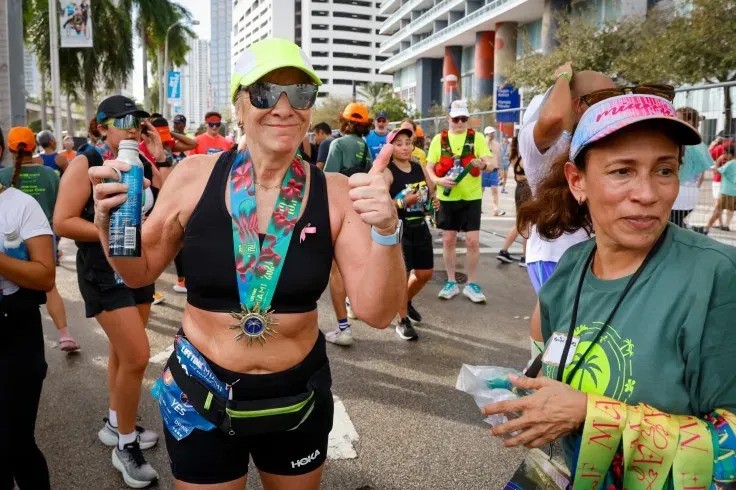The 2025 Miami Marathon is already full: How to enter the waiting list
The event will take place on February 2, 2025

The Miami Marathon has slowly but surely become an institution in the world of running. Proof of this is that it is already commonplace to hear of constant meetings and organizations all over the city, planning the next edition of an event that has boosted the growth of the running community in South Florida and has become it the most important in the state.
So it came as no surprise that registrations for the upcoming 23rd edition of the Miami Marathon, set to take place on February 2, 2025, filled out in no time. As expected, this created a waiting list bigger than any concert or event planned in the city. Neither Art Basel, Ultra or the EDM festival are as coveted.
According to the director and co-founder of the Miami Marathon, Frankie Ruiz, many have started running in the city but the organization cannot cope with the demand because overcrowding would lower the quality and experience of the participants.
"We are not going to accept 25,000 because we want the runners to have a good experience. We had some setbacks last year, and those setbacks are being worked out," Ruiz told the Miami Herald. The 2025 edition got full in record time.
Although 500 additional entries were made available for this new edition, the number is insufficient for the incessant demand. The waiting list for the 2024 edition reached up to 9,000 users, so it is expected that for this new edition the number will increase.
Those who could not get their place can go to www.themiamimarathon.com to sign up for the waiting list, which will be available from September 16 to October 31.
Once all the corresponding forms have been completed, they will have to wait until November 7, when places will be distributed until all available spaces are sold out.
The race regularly starts outside the Kaseya Center on Biscayne Boulevard, in South Florida, and in the last edition more than 16,000 competitors crossed the finish line out of the 18,000 registered.
This time, it is estimated that the starting point and finish line will remain the same, but the usual route could undergo minor changes due to construction and repairs to highways and streets.
It is also expected that a total of 30 to 35 percent of Miami-Dade County residents experience the race, which, according to Ruiz, will encourage the community's residents, many of them migrants or with Latino origins from countries such as Venezuela, the Dominican Republic, Colombia or Argentina, to help to support the event.
Subscribe to Latin Post!
Sign up for our free newsletter for the Latest coverage!

















